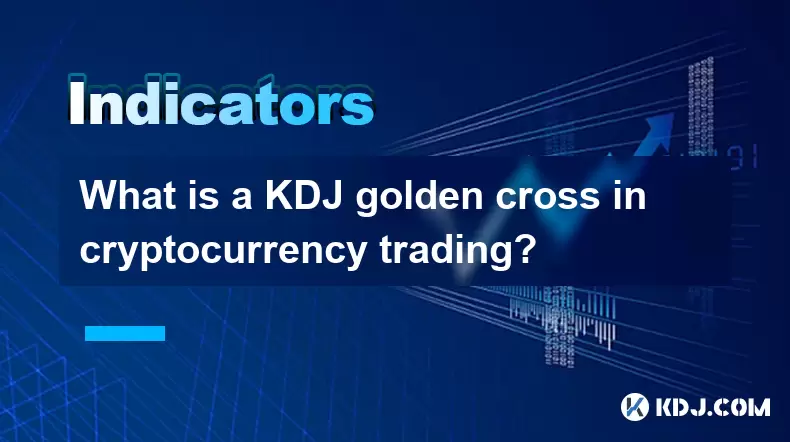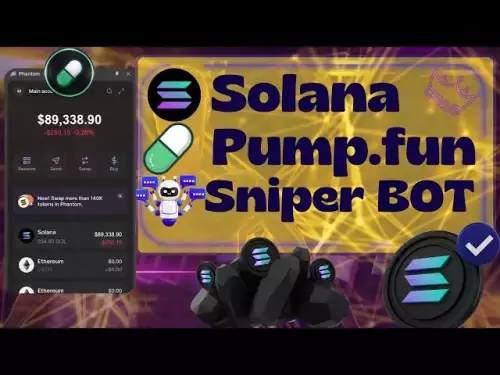-
 Bitcoin
Bitcoin $115100
-1.30% -
 Ethereum
Ethereum $4758
-1.70% -
 XRP
XRP $3.027
-2.19% -
 Tether USDt
Tether USDt $0.9998
-0.01% -
 BNB
BNB $883.2
-1.42% -
 Solana
Solana $204.0
2.62% -
 USDC
USDC $1.000
0.02% -
 Dogecoin
Dogecoin $0.2371
-0.97% -
 TRON
TRON $0.3612
-1.24% -
 Cardano
Cardano $0.9128
-2.19% -
 Chainlink
Chainlink $26.13
-3.93% -
 Hyperliquid
Hyperliquid $44.73
0.90% -
 Sui
Sui $3.715
-0.56% -
 Stellar
Stellar $0.4153
-2.41% -
 Ethena USDe
Ethena USDe $1.000
-0.04% -
 Bitcoin Cash
Bitcoin Cash $588.9
-2.06% -
 Avalanche
Avalanche $25.91
3.27% -
 Hedera
Hedera $0.2525
-1.45% -
 Litecoin
Litecoin $120.9
-1.35% -
 UNUS SED LEO
UNUS SED LEO $9.607
0.30% -
 Toncoin
Toncoin $3.382
-0.31% -
 Shiba Inu
Shiba Inu $0.00001329
-0.38% -
 Uniswap
Uniswap $11.38
-1.67% -
 Polkadot
Polkadot $4.222
2.83% -
 Aave
Aave $354.5
4.93% -
 Dai
Dai $0.0000
0.00% -
 Bitget Token
Bitget Token $4.704
-1.49% -
 Cronos
Cronos $0.1565
1.83% -
 Ethena
Ethena $0.7463
1.55% -
 Monero
Monero $265.8
-0.39%
What is a KDJ golden cross in cryptocurrency trading?
A KDJ golden cross occurs when the K line crosses above the D line below 20, signaling a potential bullish reversal in crypto markets.
Aug 13, 2025 at 11:35 am

Understanding the KDJ Indicator in Cryptocurrency Markets
The KDJ indicator is a momentum oscillator widely used in technical analysis to assess the strength and direction of price trends in cryptocurrency trading. It is derived from the Stochastic Oscillator, but with an added smoothing component known as the J line. The KDJ consists of three lines: K line, D line, and J line. These lines are calculated based on the highest high, lowest low, and closing price over a specified period—typically 9 periods. The K line reflects the raw stochastic value, the D line is a moving average of the K line, and the J line represents a tripled difference between the K and D lines, making it more sensitive to price changes.
In the context of cryptocurrency, where volatility is high and price swings are frequent, the KDJ provides traders with insights into overbought and oversold conditions. When the K and D lines are below 20, the market is considered oversold; when above 80, it is overbought. The J line often spikes above 100 or drops below 0, signaling extreme momentum. Traders use these thresholds to anticipate reversals or continuations in price trends.
What Constitutes a KDJ Golden Cross?
A KDJ golden cross occurs when the K line crosses above the D line from below, particularly when both lines are in the oversold region (below 20). This crossover is interpreted as a bullish signal, suggesting that upward momentum is building and a potential price rally may follow. The J line, being more volatile, often crosses the K and D lines earlier, but the golden cross specifically refers to the interaction between the K and D lines.
The significance of the golden cross increases when it happens in conjunction with other confirmatory signals. For instance, if the crossover occurs near a key support level on the price chart or aligns with a bullish candlestick pattern like a hammer or bullish engulfing, the signal becomes stronger. Volume analysis can also enhance the reliability of the signal—rising trading volume during the crossover indicates increased buyer participation.
How to Identify a Valid KDJ Golden Cross on a Crypto Chart
To correctly identify a KDJ golden cross, traders must follow a precise observational process on their trading platform. Most cryptocurrency exchanges and charting tools like TradingView or MetaTrader support the KDJ indicator.
- Open the chart of the cryptocurrency you are analyzing (e.g., BTC/USDT).
- Apply the KDJ indicator from the indicators library.
- Set the default parameters: 9, 3, 3 (9-period high/low, 3-period K smoothing, 3-period D smoothing).
- Observe the K and D lines in the oscillator window beneath the price chart.
- Look for a point where the K line (usually blue) moves upward and intersects the D line (usually red) from below.
- Confirm that both lines are below the 20 level for a stronger bullish implication.
- Check whether the J line is rising rapidly, indicating accelerating momentum.
It is crucial to avoid false signals. A crossover that occurs in the middle zone (between 20 and 80) may lack conviction. The most reliable golden crosses occur after a prolonged downtrend and are followed by a clear change in price direction.
Practical Steps to Trade a KDJ Golden Cross
Executing a trade based on a KDJ golden cross requires a structured approach to entry, risk management, and confirmation.
- Wait for the full candle to close after the K line crosses above the D line to avoid premature entries.
- Place a buy order at the opening of the next candle to confirm the signal.
- Set a stop-loss just below the recent swing low or the lowest point of the oversold phase.
- Use take-profit levels aligned with nearby resistance zones or Fibonacci extensions.
- Consider scaling out of the position—sell a portion at the first resistance and let the rest ride with a trailing stop.
For added reliability, combine the KDJ signal with moving averages. For example, if the price is above the 50-period EMA and the golden cross appears, the bullish bias is reinforced. Similarly, RSI divergence (price making lower lows while RSI makes higher lows) can support the reversal thesis.
Common Misinterpretations and Pitfalls
Many traders misinterpret the KDJ golden cross due to a lack of context. One common mistake is acting on every crossover without considering the broader market structure. In a strong downtrend, repeated golden crosses may appear as bullish traps, leading to losses if the overall trend remains bearish.
Another pitfall is ignoring timeframe alignment. A golden cross on a 5-minute chart may be insignificant if the 1-hour or 4-hour trend is still downward. Always check higher timeframes to determine the dominant trend. Additionally, low-volume crossovers—those occurring during periods of low trading activity—tend to be less reliable, especially in altcoins with thin order books.
Over-reliance on the KDJ without confirmation from price action or volume can lead to poor decision-making. The indicator is lagging, meaning it reacts to price changes rather than predicting them. Therefore, it should not be used in isolation.
Using KDJ Golden Cross in Conjunction with Other Tools
To enhance the accuracy of the KDJ golden cross, integrate it with complementary analytical tools.
- Combine with support and resistance levels: A golden cross near a historical support zone increases the probability of a bounce.
- Use candlestick patterns such as doji, bullish engulfing, or morning star to confirm reversal strength.
- Monitor volume spikes during the crossover—increasing volume validates the signal.
- Apply MACD histogram to check for momentum shift; a rising MACD bar supports the bullish case.
- Consider on-chain data for Bitcoin or Ethereum, such as exchange outflows, which may indicate accumulation.
By layering multiple forms of confirmation, traders reduce the risk of false signals and improve the robustness of their strategy.
Frequently Asked Questions
What is the difference between a KDJ golden cross and a death cross?
A KDJ golden cross occurs when the K line crosses above the D line in the oversold zone, signaling a potential bullish reversal. A death cross is the opposite—the K line crosses below the D line in the overbought zone (above 80), indicating a bearish reversal.
Can the KDJ golden cross be used in sideways markets?
Yes, but with caution. In ranging markets, the KDJ frequently generates crossover signals. These may result in whipsaws—repeated false entries. It is advisable to use Bollinger Bands or ADX to confirm whether the market is trending or ranging before acting.
Is the KDJ indicator suitable for all cryptocurrencies?
The KDJ can be applied to any cryptocurrency, but its effectiveness varies. It works best in highly liquid pairs like BTC/USDT or ETH/USDT where price data is reliable. In low-volume altcoins, erratic price movements can distort the indicator readings.
How do I adjust KDJ settings for different trading styles?
For scalping, reduce the period to 5, 2, 2 for faster signals. For swing trading, use the standard 9, 3, 3. For longer-term analysis, increase to 14, 3, 3 to filter out noise. Always backtest changes on historical data before live use.
Disclaimer:info@kdj.com
The information provided is not trading advice. kdj.com does not assume any responsibility for any investments made based on the information provided in this article. Cryptocurrencies are highly volatile and it is highly recommended that you invest with caution after thorough research!
If you believe that the content used on this website infringes your copyright, please contact us immediately (info@kdj.com) and we will delete it promptly.
- Whitelist Frenzy: Is This the Top Meme Coin of 2025?
- 2025-08-24 08:45:22
- Ruvi AI: The AI Token Igniting a Cardano-esque Rally?
- 2025-08-24 07:45:12
- Altcoins in a Market Dip: Is Polygon (MATIC) Poised for a Reversal?
- 2025-08-24 07:05:13
- Crypto, Pepe, and Investment: Navigating the Meme Coin Mania in 2025
- 2025-08-24 06:45:29
- VanEck's JitoSOL ETF: A New Era for Solana and Institutional Crypto
- 2025-08-24 07:45:12
- Dogecoin, Shiba Inu, and the Rise of New Crypto Contenders
- 2025-08-24 08:05:30
Related knowledge

What does it mean when the +DI and -DI cross frequently in the DMI indicator but the ADX is flattening?
Aug 11,2025 at 03:15am
Understanding the DMI Indicator ComponentsThe Directional Movement Index (DMI) is a technical analysis tool composed of three lines: the +DI (Positive...

What does the sudden appearance of a "dark cloud cover" candlestick pattern during an uptrend indicate?
Aug 13,2025 at 11:35am
Understanding the 'Dark Cloud Cover' Candlestick PatternThe dark cloud cover is a bearish reversal pattern in technical analysis that typically appear...

What does it mean when the moving average, MACD, and RSI all send buy signals simultaneously?
Aug 11,2025 at 01:42pm
Understanding the Convergence of Technical IndicatorsWhen the moving average, MACD, and RSI all generate buy signals at the same time, traders interpr...

What does it mean when both the KDJ indicator and the RSI show overbought signals simultaneously?
Aug 13,2025 at 11:35am
Understanding the KDJ Indicator in Cryptocurrency TradingThe KDJ indicator is a momentum oscillator derived from the Stochastic Oscillator, widely use...

What does it mean when the price is trading above the SAR indicator but the red dots are densely packed?
Aug 09,2025 at 11:49pm
Understanding the SAR Indicator and Its Visual SignalsThe SAR (Parabolic Stop and Reverse) indicator is a technical analysis tool used primarily to de...

What does it mean when the candlestick chart forms a "Morning Star" but trading volume is sluggish?
Aug 12,2025 at 06:28pm
Understanding the Morning Star Candlestick PatternThe Morning Star is a three-candle bullish reversal pattern commonly observed in cryptocurrency pric...

What does it mean when the +DI and -DI cross frequently in the DMI indicator but the ADX is flattening?
Aug 11,2025 at 03:15am
Understanding the DMI Indicator ComponentsThe Directional Movement Index (DMI) is a technical analysis tool composed of three lines: the +DI (Positive...

What does the sudden appearance of a "dark cloud cover" candlestick pattern during an uptrend indicate?
Aug 13,2025 at 11:35am
Understanding the 'Dark Cloud Cover' Candlestick PatternThe dark cloud cover is a bearish reversal pattern in technical analysis that typically appear...

What does it mean when the moving average, MACD, and RSI all send buy signals simultaneously?
Aug 11,2025 at 01:42pm
Understanding the Convergence of Technical IndicatorsWhen the moving average, MACD, and RSI all generate buy signals at the same time, traders interpr...

What does it mean when both the KDJ indicator and the RSI show overbought signals simultaneously?
Aug 13,2025 at 11:35am
Understanding the KDJ Indicator in Cryptocurrency TradingThe KDJ indicator is a momentum oscillator derived from the Stochastic Oscillator, widely use...

What does it mean when the price is trading above the SAR indicator but the red dots are densely packed?
Aug 09,2025 at 11:49pm
Understanding the SAR Indicator and Its Visual SignalsThe SAR (Parabolic Stop and Reverse) indicator is a technical analysis tool used primarily to de...

What does it mean when the candlestick chart forms a "Morning Star" but trading volume is sluggish?
Aug 12,2025 at 06:28pm
Understanding the Morning Star Candlestick PatternThe Morning Star is a three-candle bullish reversal pattern commonly observed in cryptocurrency pric...
See all articles

























































































